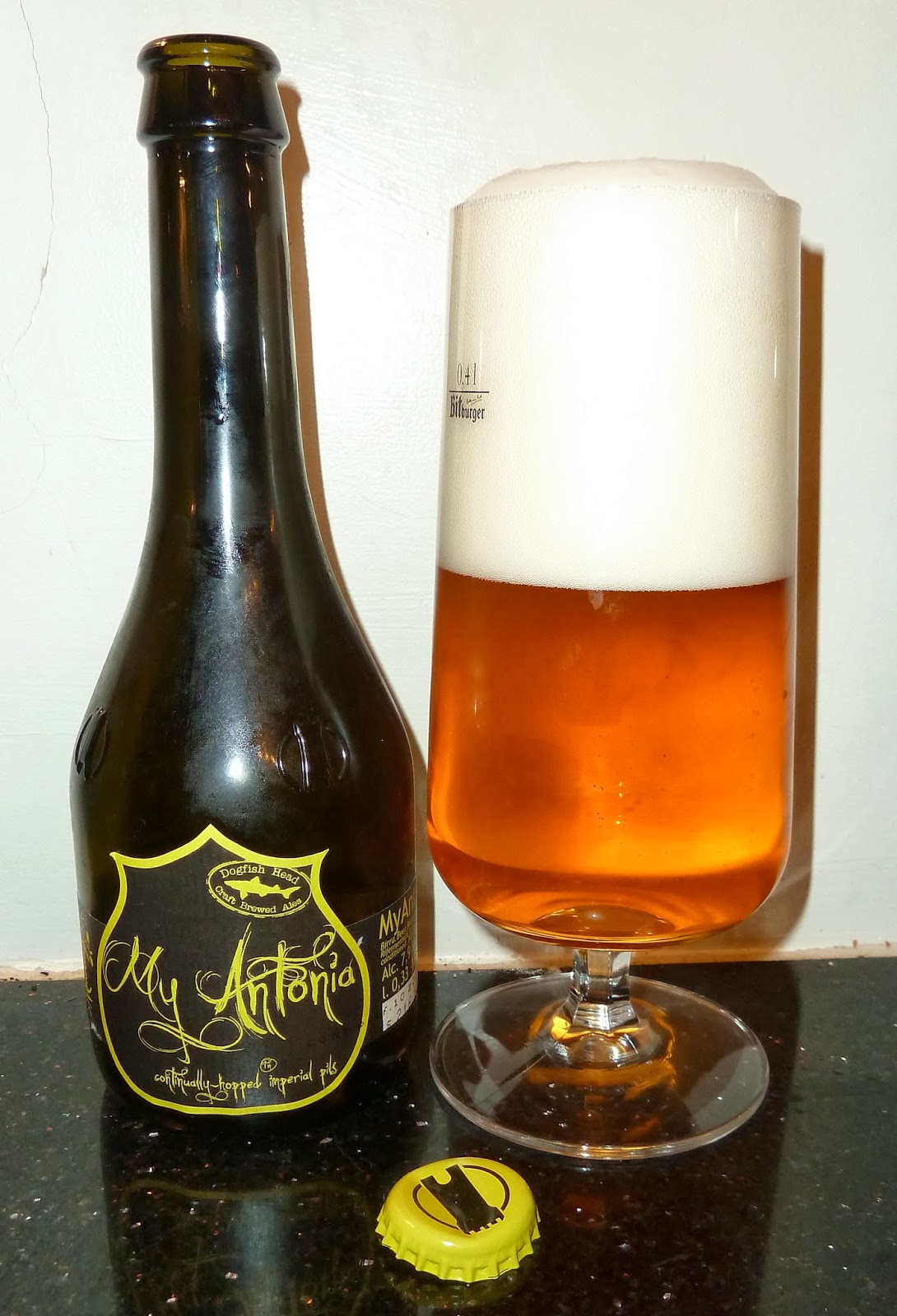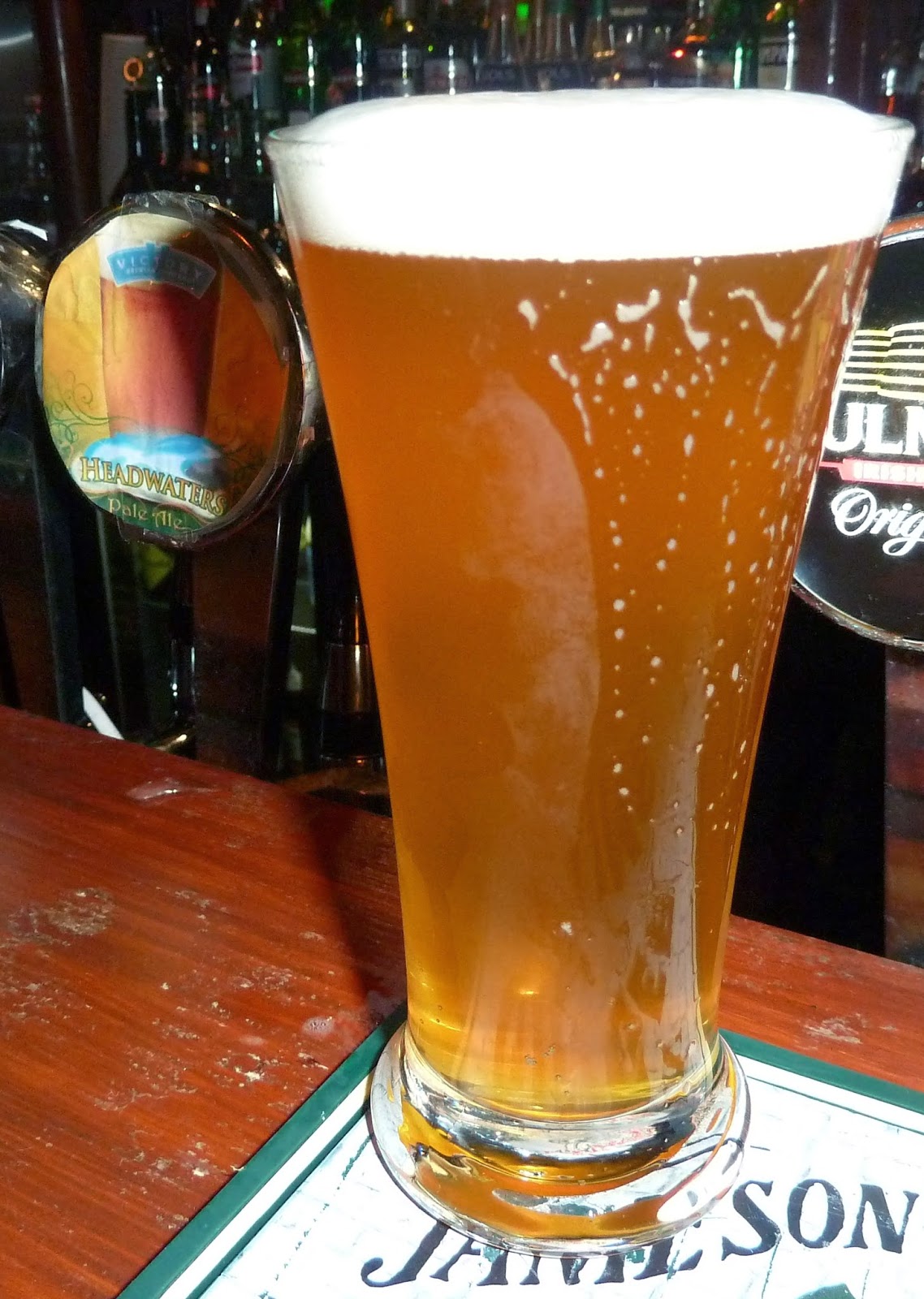 |
| (Photo by Bryce Edwards, from Flickr Creative Commons) |
Inside it feels more like a down-at-heel canteen or café than an hotel bar, however lacking in swank said hotel may be. The furniture is shabby and mismatched, the lighting severe and the walls in serious need of a coat or two of paint. Threadbare curtains are kept drawn lest the decent citizens outside be scandalised by what goes on within. There's a distinct feel of speakeasy about the clientèle: a few young chancers here to catch the TV football results, and an ever-changing group of elderly gents, coming and going, exchanging gossip and tutting at the general ways of the world. All have Flag Spéciale in front of them, paying no attention to the little green bottles until a hand darts in and a swig is taken, then quickly back to the table as though nothing has happened. Drinking? Me? Heaven forbid!
As tourists, we were served our Spéciales in posh wine glasses, along with a fiery bowl of harissa-laced olives and shredded pickled carrot. How was the beer? It was beer, and that was enough.
As far as I can determine there is just one brewing company in the country, Heineken-owned Société des Brasseries du Maroc, operating three breweries around the country. One occasionally glimpses expensive imported Leffe and Hoegaarden, but otherwise it's Heineken products all the way.
Apart from the eponymous Dutch pilsner, a couple of foreign brands are produced under licence, including Castel, originally from Bordeaux. It's a not as commonplace as the other beers and is a little more expensive than most but I was glad to find it on the rare occasions that I did, just to add some semblance of variety to my all-lager diet.
Heineken's bog-standard French lager 33 Export is also brewed locally and represents the only draught beer I found over the fortnight I was in Morocco. This was at The Chesterfield, a rather fun low-ceilinged, wood and leather-lined bar, secluded on a hidden mezzanine within the walls of the Hotel Nassim in Marrakesh's new town. Again, perfectly acceptable, but the novelty of taking pulls from a half-litre mug was almost thrilling.
As far as I can determine there is just one brewing company in the country, Heineken-owned Société des Brasseries du Maroc, operating three breweries around the country. One occasionally glimpses expensive imported Leffe and Hoegaarden, but otherwise it's Heineken products all the way.
Apart from the eponymous Dutch pilsner, a couple of foreign brands are produced under licence, including Castel, originally from Bordeaux. It's a not as commonplace as the other beers and is a little more expensive than most but I was glad to find it on the rare occasions that I did, just to add some semblance of variety to my all-lager diet.
Heineken's bog-standard French lager 33 Export is also brewed locally and represents the only draught beer I found over the fortnight I was in Morocco. This was at The Chesterfield, a rather fun low-ceilinged, wood and leather-lined bar, secluded on a hidden mezzanine within the walls of the Hotel Nassim in Marrakesh's new town. Again, perfectly acceptable, but the novelty of taking pulls from a half-litre mug was almost thrilling.
Flag Pils is the epitome of beer that's OK to drink and quite refreshing on a warm January afternoon when served sufficiently cold. I reckon the branding could do with an update, though. It's a few decades since anyone thought "I'll choose this one; it's beige".
Another one whose packaging doesn't seem to have received any attention since the French left Morooco is Stork. Like Flag Pils, it's cheap and not particularly cheerful, and it's hard to imagine that the words "Bière De Luxe" are meant as anything other than irony. From what I could gather hanging around in the dens of inquity that are supermarket off licences (hidden in a corner, with a dedicated check-out for sinners -- it reminded me of beer shopping in Northern Ireland), this is Morocco's old man beer. I opted for a can when I tried it, but the preferred format is a 330ml bottle made from inch-thick green glass and weighing significantly more than the beer inside.
 I've had it before, in a Moroccan restaurant in Brussels, but I can't leave without mentioning the national icon which is Casablanca beer. Well, I assume it's iconic: they certainly charge enough for it as it's 50% dearer than most of the other beers and I can't say I detected anything in the flavour to justify that. As well as the 330ml cans and bottles, this also comes in a weird energy-drink-sized 250ml can. Maybe God doesn't object to those quite as much.
I've had it before, in a Moroccan restaurant in Brussels, but I can't leave without mentioning the national icon which is Casablanca beer. Well, I assume it's iconic: they certainly charge enough for it as it's 50% dearer than most of the other beers and I can't say I detected anything in the flavour to justify that. As well as the 330ml cans and bottles, this also comes in a weird energy-drink-sized 250ml can. Maybe God doesn't object to those quite as much.And that's where we leave Morocco. If you'd like tasting notes on any of these beers you'll have to look elsewhere, I'm afraid. The Session this month is under the aegis of Oliver at Literature & Libation, and descriptions are verboten. Trust me: you're not missing much.










































